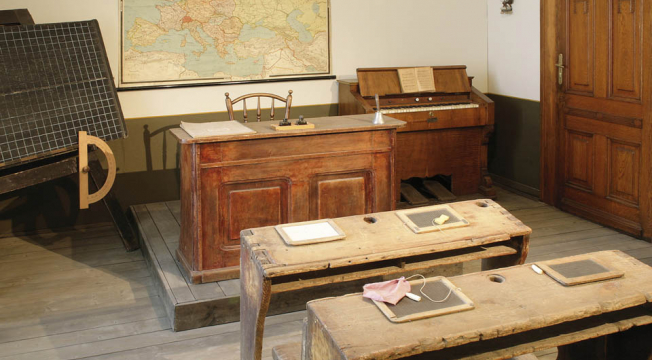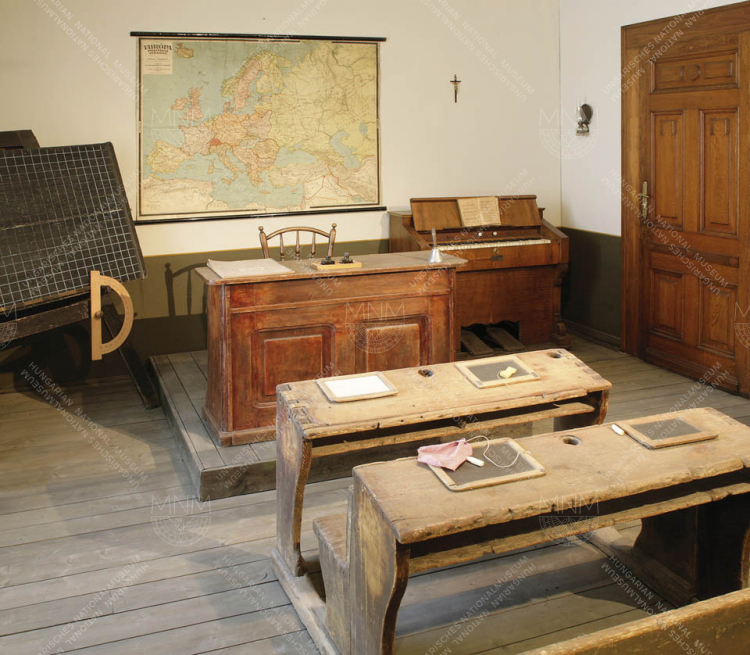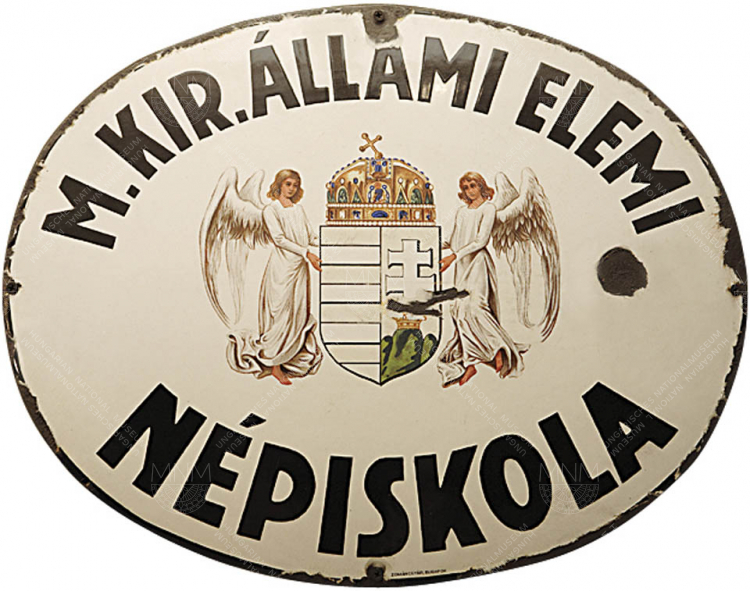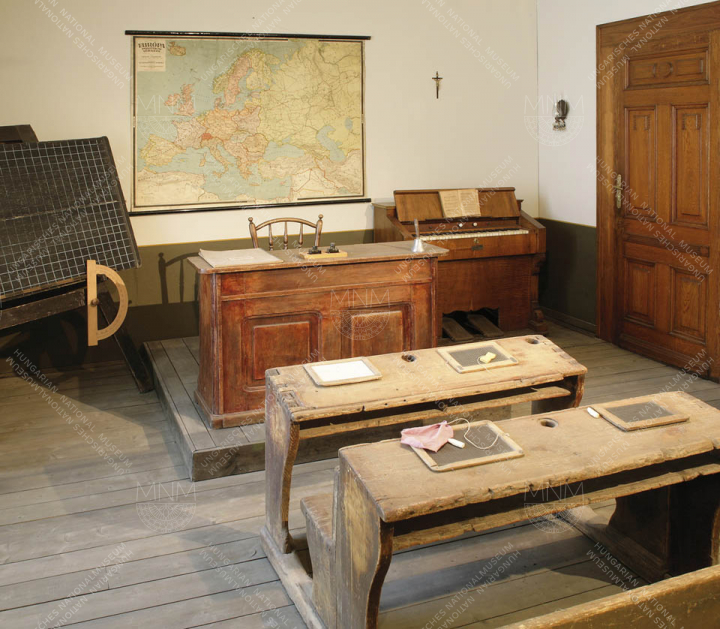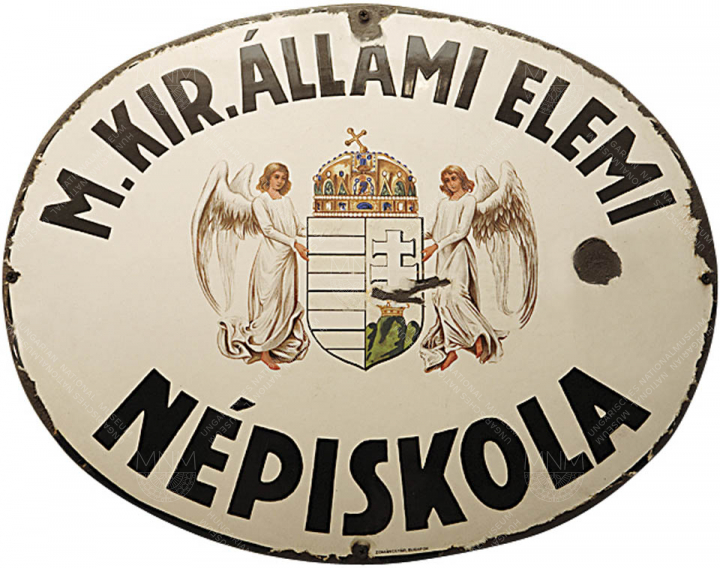
Room 18
The passage leading from the previous room presents changes in everyday life during this period. The classroom interior denotes the era’s strategically significant elementary-school programme, as well as the reduction of illiteracy. The cinema shows the advent of ʻtalkies’, and with them the advent of a new means of mass entertainment and of propaganda also. The revolutionary changes in everyday life are conveyed by artefacts and posters. The use of gas and electricity became more widespread during these years. Gas cookers, refrigerators, and water heaters made their appearance. Tinned foods, pressure cookers, and heat-resistant glass became common in middle-class households. Use of radios, cameras, bicycles, and even cars grew massively. Relaxation at weekends became the norm during this era.
Interesting facts:
As part of a complete overhaul of the school system in Hungary, Education Minister Kunó Klebelsberg arranged for the construction of 5000 elementary-school classrooms and dwellings for teachers. One aim of this programme was to raise the cultural level of the country, which had been weakened militarily, and to strengthen Hungarian ʻcultural superiority’ in the Carpathian Basin. In the period from 1931 to 1938, the Hungarian film industry produced 132 talking films, the majority of which were honeyed comedies that gave expression to the desires of their viewers. Mandatory before feature films, newsreels were an effective propaganda means for the government.







